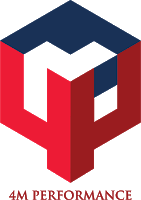
The first industrial revolution came about when manufacturing meet steam power. The second, when electricity came to power factory machinery. The third, when digital technology was introduced and because of the growth in the ever-evolving digital domain. A fourth industrial revolution is now upon us – Industry Revolution 4.0 (IR-4.0).
What is the Industrial Revolution 4.0?
IR-4.0 brings together information-technology and production-technology. Automation applications and robots influence production performance and production quality — reducing human-induced inefficiencies and errors. Smart machines operate in measured and fixed ways enable precise planning. Thus, increasing productivity and quality, while minimizing downtimes and failures.
In IR-4.0, investment in smart machinery and robots is a necessity for today’s manufacturers, even in logistics and supply chain. The use of the Internet of Things (IoT) brings together information technology and industrial design to elevate industrial production to a new level. Moreover, It’s a level where robots communicate with each other, detect the environment with sensors, and determine the production process’ needs through data analysis.
It’s where brand dependency is replaced by benefit dependency. Now, the goal becomes to use robotics, enabled by artificial intelligence, to take over production completely. Many businesses that once relied on human labor, now must switch to brain power rather than muscle power.
Consequently, as Industrial Revolution 4.0 takes hold and evolves, new industry sectors will emerge as others disappear. This will cause a major impact to companies, countries, and people across the globe.
The Need for Trained Employees
Today’s IR-4.0 employees will not need to know how to operate machinery, but how to program and build robots.
As we have seen in 2020 with the pandemic, companies who want to compete in today’s market have to quickly become tech-savvy and adapt technology or be left behind in the dust.





0 Comments